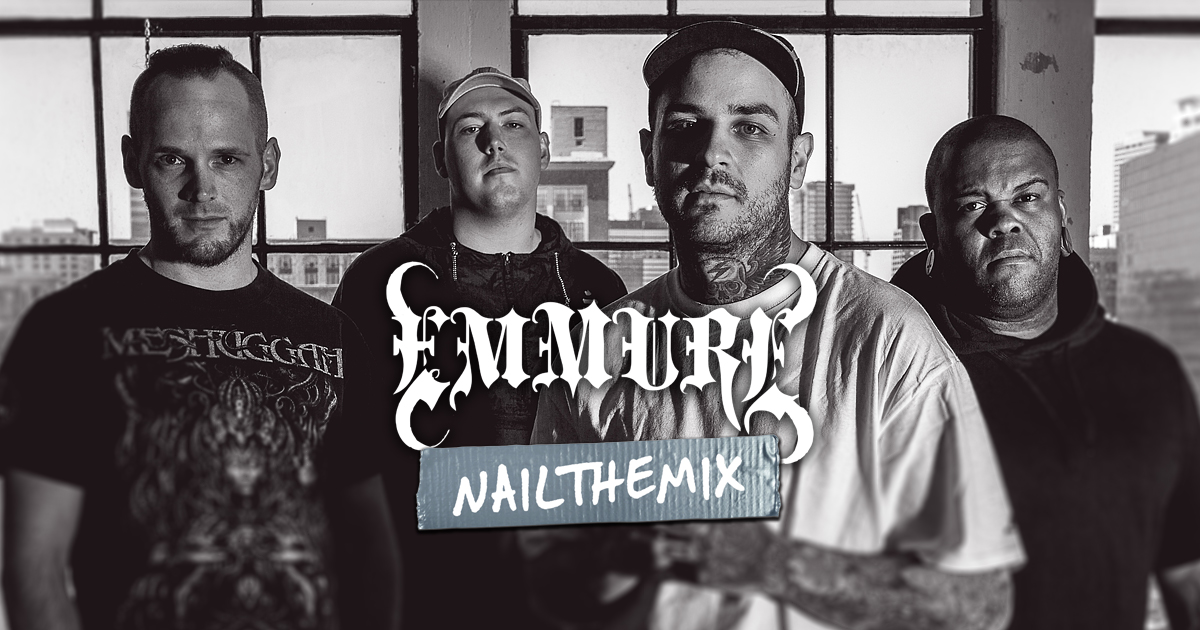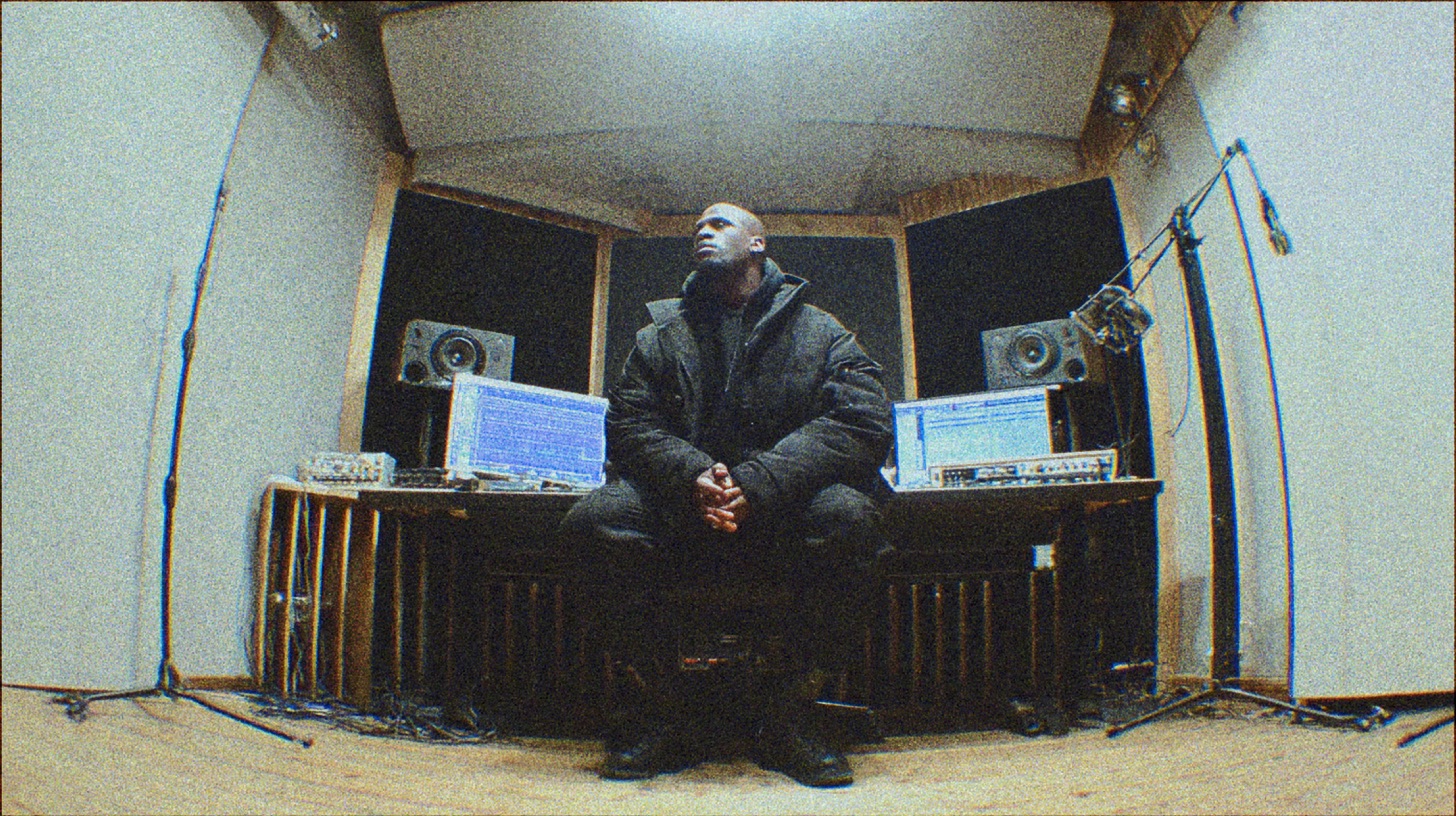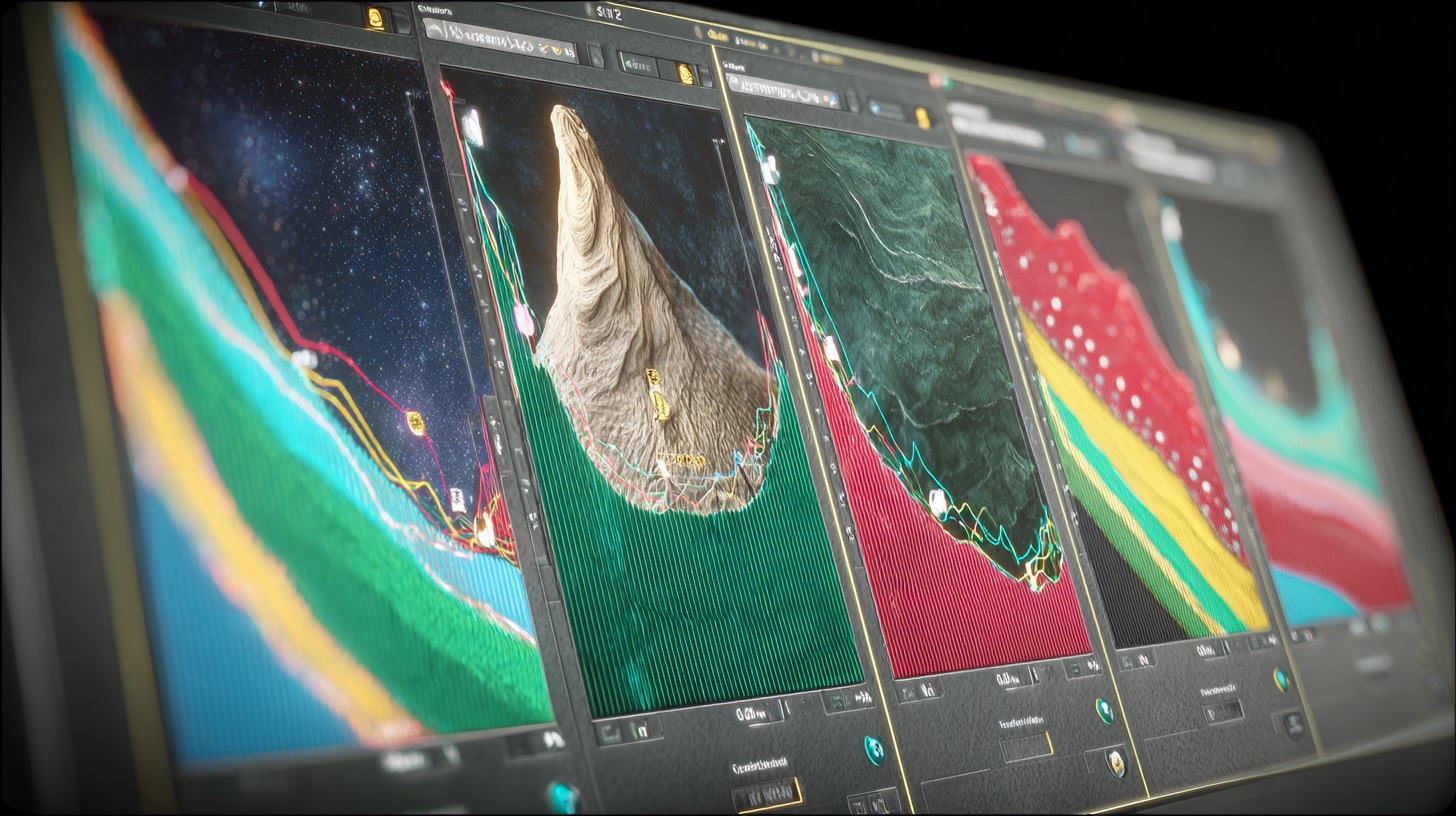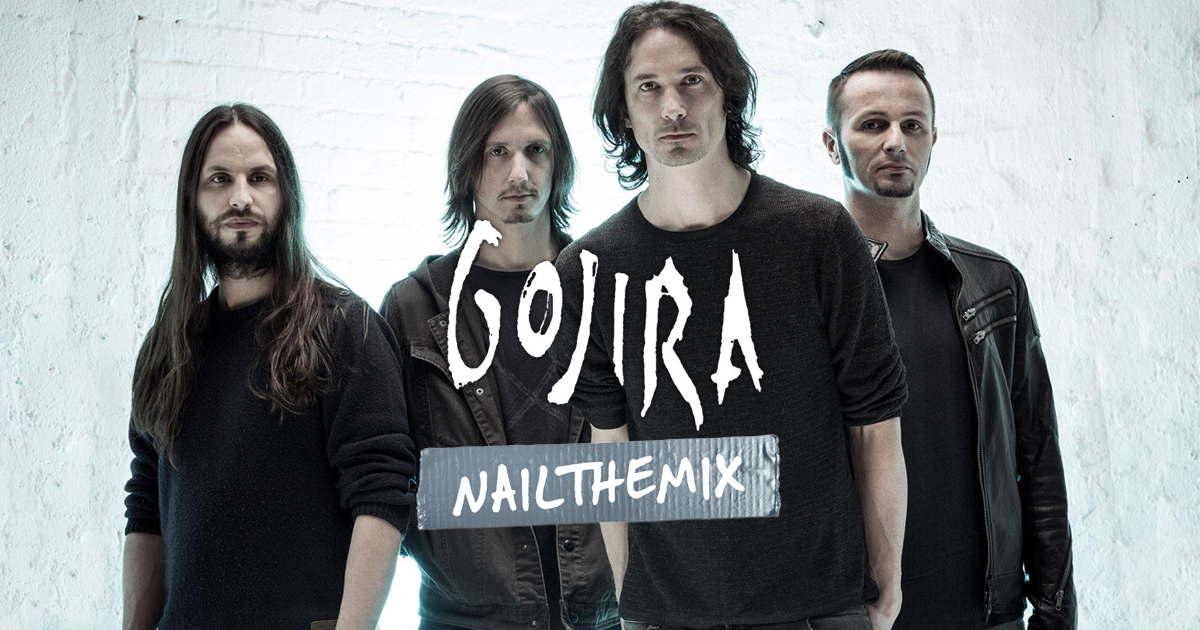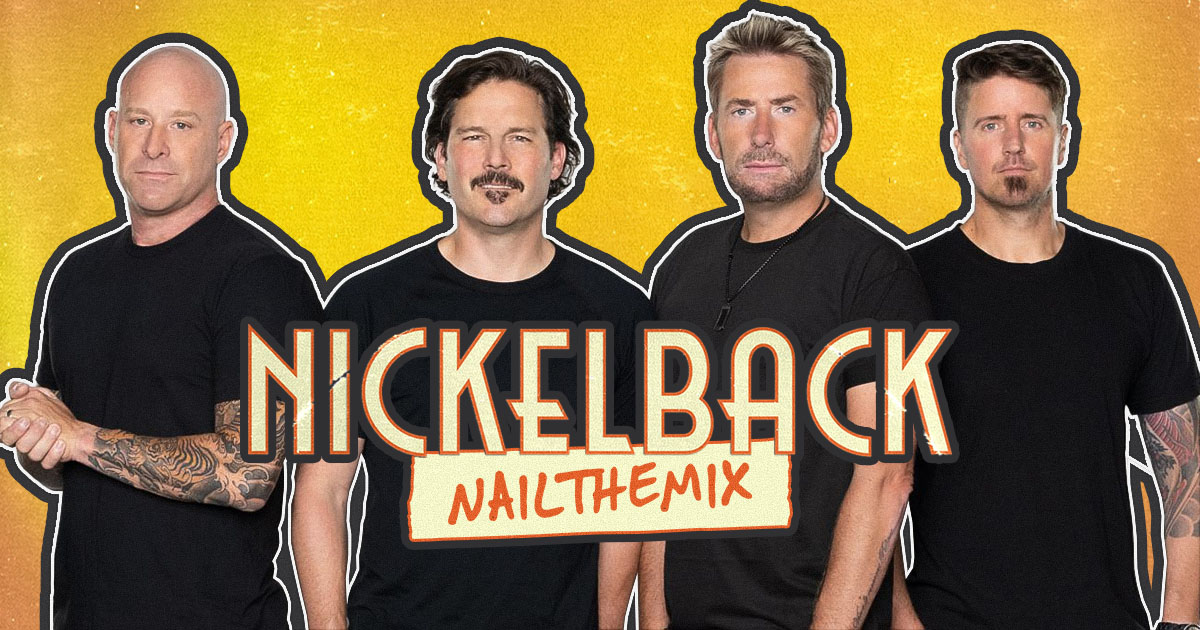
# Inside the Mix: Deconstructing Nickelback’s ‘San Quentin’ Multitracks
Nail The Mix Staff
Let’s be honest: Nickelback has a reputation for some of the biggest, most polished, and sonically massive rock mixes ever created. When we got the chance to get our hands on the raw multitracks for their heavy-hitting track “San Quentin,” mixed by the incredible Chris Bassford, it was a dream come true.
Peeling back the layers reveals something many metalheads have suspected for years—this is a band that loves HEAVY. The session is packed with techniques and tones that borrow heavily from the world of metal, from deathcore-esque chugs to modern production ear candy. Let’s fire up the DAW and explore the raw ingredients that make up this modern rock anthem.
The Surprisingly Brutal Guitar Attack
Forget what you think you know. The guitars in “San Quentin” come out of the gate with pure, unadulterated savagery. This isn’t just rock; it’s a full-on assault built from meticulously crafted layers.
Deathcore Intro Tones & Pick Scrapes
The track kicks off with a guitar tone that could easily find a home on a deathcore record. It’s a filthy, aggressive sound that immediately sets a heavy precedent. But it’s not just the tone; the performance is loaded with classic metal production tricks. You can hear searing pick scrapes and wailing “siren” effects, proving just how much detailed production went into making these parts feel huge and dynamic right from the start.
Building the Main Rhythm Wall of Sound
The core Nickelback guitar tone that we’ve all tried to dial in since 2006 is here in all its glory. The foundation is a beefy, crushing rhythm tone with a powerful and controlled low-end that feels like a punch to the chest.
But the secret to its size is in the layering. The session reveals at least three distinct layers working together in the main riffs:
- The Main Rhythm: This is the core, high-gain tone providing the primary power and definition.
- A Second Layer: A complementary track that thickens the sound and fills out the midrange.
- A Fuzz Guitar: This layer is blended in to add a gritty texture and harmonic complexity, giving the overall tone a unique character and bite.
When combined, these elements create a guitar sound that is absolutely colossal—a true masterclass in building a modern rock wall of sound.
The Legendary Nickelback Low End: Bass & Drums
A massive guitar tone needs an equally massive foundation. The rhythm section in “San Quentin” is a perfect example of how to build a powerful low end that is both heavy and clear.
Dialing in the Gnarly Bass Tone
Listening to classic Nickelback records like All The Right Reasons leaves you wondering how they achieve such a monstrous blend of bass and guitar. The “San Quentin” session gives us a clue. The bass was recorded using a two-channel setup:
- Channel 1: Likely a clean DI signal, providing the solid, fundamental low-end and sub-frequencies.
- Channel 2: A gnarly, distorted channel that provides the grit, midrange cut, and aggression needed to slice through the dense guitar tracks.
Hearing these two tones raw is a revelation. It shows how blending these two distinct signals is the key to creating a bass sound that can be felt in the subs and heard clearly on smaller speakers.
The Anatomy of a Modern Rock Drum Kit
The drum recordings are impeccably clean and punchy. The signal-to-noise ratio is fantastic, with minimal bleed, especially on close mics like the snare top. This gives the mixer ultimate flexibility—you could easily turn these shells into pristine samples if you wanted.
The track layout is what you’d expect from a top-tier production: Kick In, Kick Out, a dedicated Sub channel, Snare Top, Toms, and spot mics for the Hi-Hat and Ride.
Crafting Massive Ambience
One of the hallmarks of a Chris Bassford mix is his iconic, larger-than-life drum ambience. The multitracks provide all the tools he needs to work his magic, including:
- Stereo Overheads (Drummer Perspective)
- A “Kohl’s” Room Mic
- An additional Ambient Mic
With these sources, a mixer has complete control to shape the space around the kit, from tight and punchy to epic and arena-sized. It’s a goldmine for anyone looking to learn how to create huge, professional-sounding drum rooms.
Metal Production Tricks in a Rock Anthem
Beyond the core instruments, “San Quentin” is loaded with production elements that are staples in modern metalcore. It’s awesome to see a band as iconic as Nickelback using these techniques to enhance the impact and excitement of the song.
You’ll find everything from the classic rock tambourine and stereo-panned shakers to hard-hitting sub booms and impacts that accentuate major transitions. The session is also full of creative textures like reverb-drenched kick hits and reverse cymbal swells, adding a layer of polish and drama that elevates the entire track.
Analyzing Chad Kroeger’s Iconic Vocal Performance
You can’t talk about a Nickelback track without talking about Chad Kroeger’s powerhouse vocals. Hearing his raw lead vocal is a lesson in itself—the amount of power, controlled rasp, and perfect pitch he delivers is simply insane.
Strategic Vocal Layering and Compression
The vocal production is just as detailed as the rest of the track. The lead vocal has a touch of initial compression to tame the dynamics, but one of the coolest tricks is found in the doubles.
The main vocal doubles appear to be uncompressed. This is a brilliant move. When blended underneath the compressed lead, the dynamic peaks of the double poke through on certain words, adding emphasis and aggression without muddying up the mix. It’s a subtle but incredibly effective technique. On top of that, the session is filled with ad-libs, huge gang vocals, and intricate harmonies that create a massive, radio-ready vocal sound.
Get Your Hands on the Multitracks
Deconstructing these raw tracks offers incredible insight into modern rock production. You can see how smart layering, clean recording, and a blend of rock and metal techniques create a polished, powerful final product.
Nickelback on Nail The Mix
Chris Baseford mixes "San Quentin"
Get the Session
But analyzing the raw audio is just the beginning. The real magic happens when you see how a world-class mixer like Chris Bassford brings these elements to life. At Nail The Mix, you can do more than just read about it—you can be a fly on the wall as he mixes “San Quentin” from scratch, explaining every plugin, every fader move, and every decision along the way. Learning how to carve out space with smart EQ strategies or glue the bus together is a game-changer.
If you’re ready to see how a hit song is truly made and want to take your own mixes to the next level, check out our free masterclass, Unlock Your Sound, to get a taste of what we do.
Want to mix this massive Nickelback track yourself? Download the multitracks for “San Quentin” and watch Chris Bassford’s full mixing session now at Nail The Mix.
Get a new set of multi-tracks every month from a world-class artist, a livestream with the producer who mixed it, 100+ tutorials, our exclusive plugins and more
Get Started for $1

